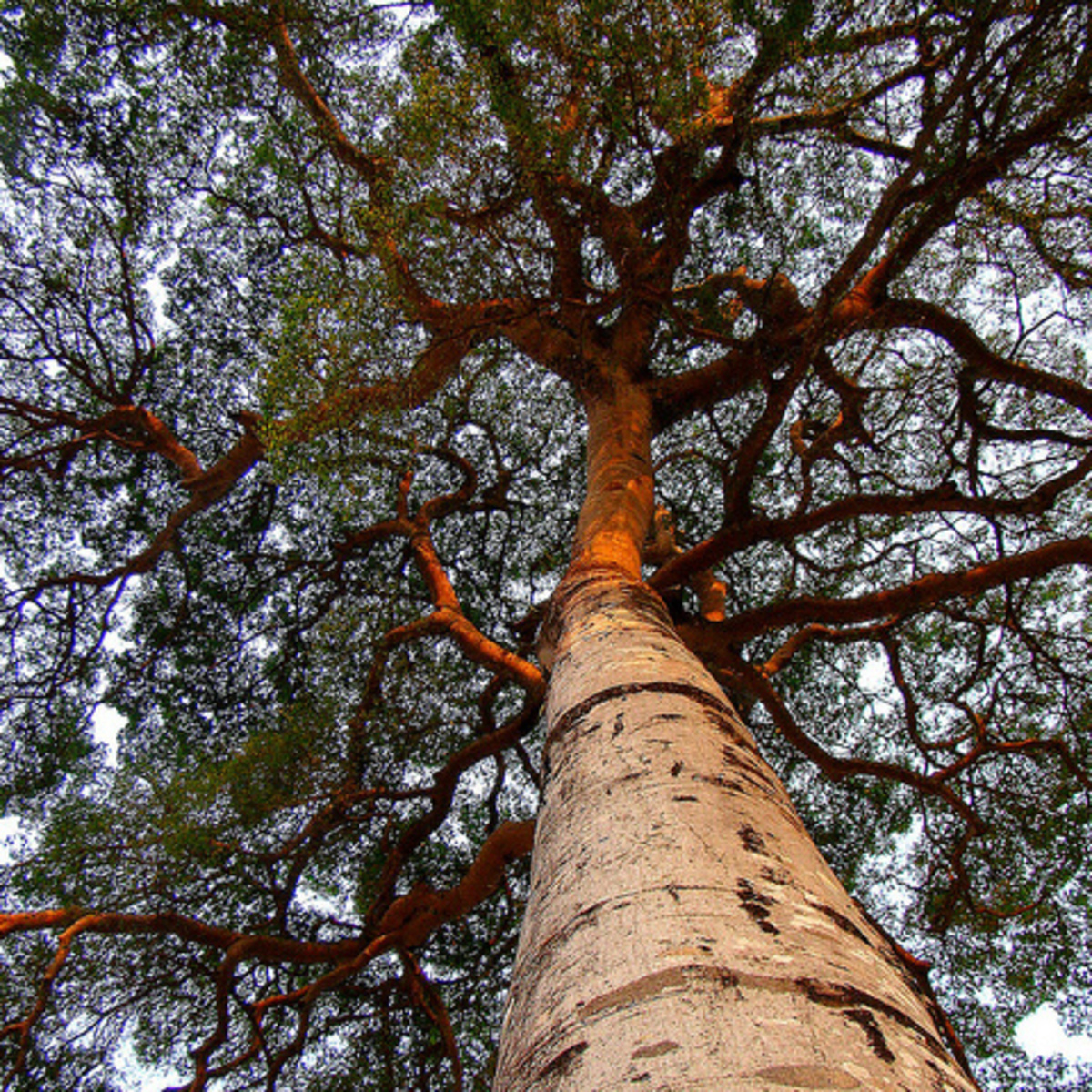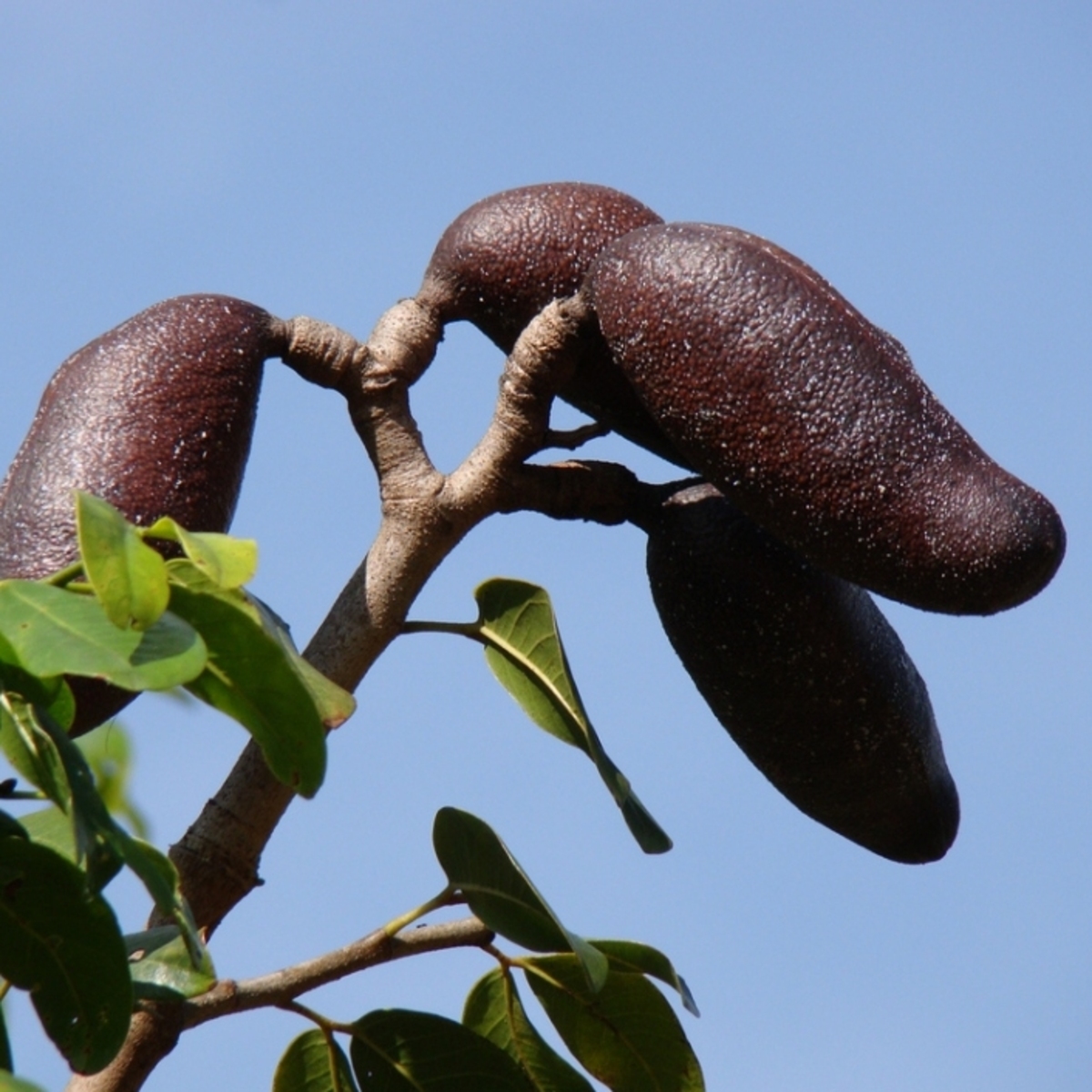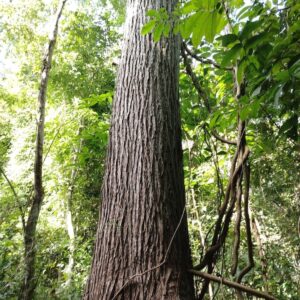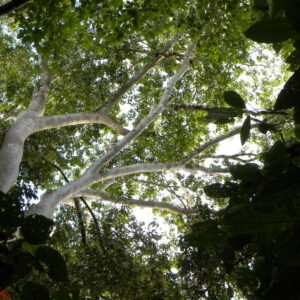| Habit | Evergreen tree |
|---|---|
| USDA Hardiness | 10-12 |
| Height | Usually 30-40 meters, can grow up to 50 meters |
| Growth rate | Slow |
| Soil | Intermediate, heavy (clay) |
| Shade | No shade |
| Moisture | Dry, moist |
| Edibility (0-5) | 3 |
| Medicinal uses (0-5) | 3 |
| Other uses (0-5) | 4 |
West Indian Locust
$ 23.00
Plant for the Planet. Gift with Purpose.
Contribute to global reforestation and receive a certificate showcasing your involvement. An impactful gift choice for eco-conscious individuals.
The West Indian Locust (Hymenaea courbaril), also known as Jatobá, is the true multitasker of the tropical world! This evergreen beauty, with its impressive umbrella-shaped crown and strong, straight trunk, stands tall at up to 30 meters—ready to take on anything from furniture making to curing a cough. Its massive branches spread wide, casting shade while producing a sweet, starchy fruit that’s as versatile as it is tasty. Whether eaten raw, made into ice cream, or even fermented into a local brew, this fruit has a flavor that packs a punch and a texture that’s like a floury paste in your mouth.
The Jatobá tree isn’t just about satisfying your sweet tooth. The leaves, sap, and fruit all have medicinal properties, treating everything from coughs and bronchitis to wounds and diabetes. And the high-protein, fiber-rich fruit? It was once a staple for indigenous peoples and still finds its place in local diets today, offering sustenance in the form of “atole” (a thick, sweet drink) or even as a nutritious animal feed.
Despite all its usefulness, the West Indian Locust isn’t without its challenges. The slow-growing tree faces threats from habitat loss and logging, as its wood is highly prized in the market. As development spreads across Central and South America, this mighty tree could become a rare sight in the wild.
Your tree will be planted by Forest Friends in the Cerrado region of Brazil, one of the world’s most biodiverse savannas.
Availability: In stock











Reviews
There are no reviews yet.